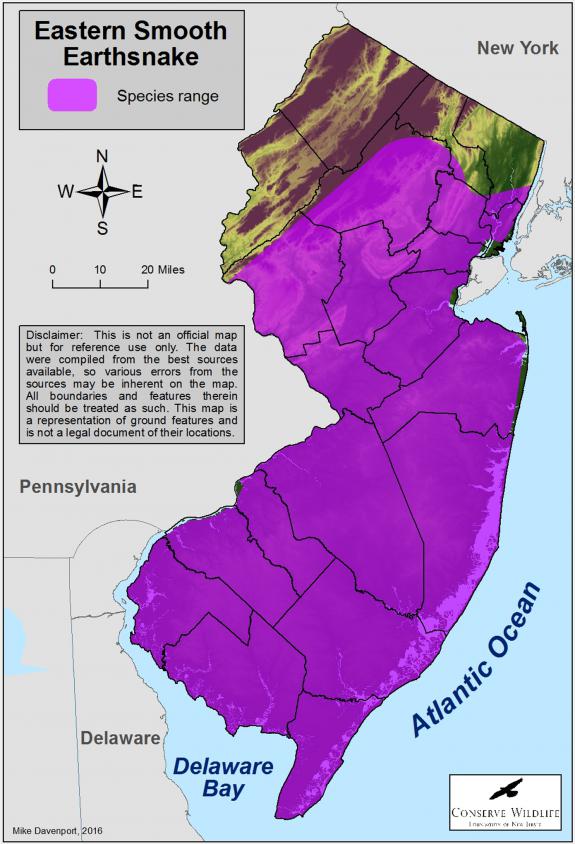Virginia valeriae valeriae
Type: reptile
Status: special concern
Species Guide
Eastern smooth earthsnake
Virginia valeriae valeriae
Species Type: reptile
Conservation Status: special concern
IDENTIFICATION
The eastern smooth earthsnake is a relatively plain looking snake with a gray or light brownish gray color. It may have small black dots or a faint light stripe on its back. The belly is white to pale yellow. It grows to a length of 7 to 13 ¼ inches. It is a small, well-camouflaged snake, hard to find since it tends to hide under debris.
The scales on this snake are smooth or weakly keeled (more keeled near the tail) and in 15 rows. The anal plate is divided. The smooth scales and facial scales may be used to differentiate this species from the northern brown snake (Storeria dekayi). The eastern smooth earthsnake has a horizontal scale directly in front of the eye, while the Northern brown does not.

Distribution & Habitat
The eastern smooth earthsnake occurs throughout the eastern United States, from Ohio and Alabama in the west to the eastern seaboard from the southern half New Jersey in the north to northern Florida in the south. Smooth earthsnakes are only found in the southern half of New Jersey.
This snake can be found in or near deciduous woodlands. In New Jersey, it is typically found within pitch pine forests.
Diet
This species eats primarily earthworms, but will also feed on slugs and other small soft-bodied invertebrates.
Life Cycle
Smooth earthsnakes are primarily active between the months of April to September in New Jersey. It is primarily nocturnal and secretive, burrowing in soil or under logs, rocks, or other cover. It is more active at the surface after heavy rains.
This species gives birth to 2-18 live young, usually in late summer. It may hibernate in groups during the winter.
Current Threats, Status, and Conservation
In 2016, the New Jersey Endangered and Nongame Advisory Committee recommended a Special Concern status for this species within the state, but no formal rule proposal has been filed to date. The Special Concern status is largely due to population declines and habitat loss. Reasons for the decline in their population are loss of habitat, illegal capture for the pet trade, road mortality, and direct killing. This species, like many snakes, has an undeserved bad reputation and they are often killed, which is illegal in New Jersey.
In January 2025, the NJDEP adopted a rule proposal changing the status of the eastern smooth earthsnake to special concern.
HOW TO HELP
The Endangered and Nongame Species Program would like for individuals to report their sightings of eastern smooth earthsnakes. Record the date, time, location, and condition of the animal and submit the information by submitting a Sighting Report Form. The information will be entered into the state’s natural heritage program, commonly referred to as Biotics. Biologists map the sighting and the resulting maps “allow state, county, municipal, and private agencies to identify important wildlife habitats and protect them in a variety of ways. This information is used to regulate land-use within the state and assists in preserving endangered and threatened species habitat remaining in New Jersey.”
References
- NatureServe. 2015. NatureServe Explorer: An online encyclopedia of life. Version 7.1. NatureServe, Arlington, Virginia. Available http://explorer.natureserve.org. (Accessed: January 9, 2016).
- Schwartz, Vicki and D.M. Golden. 2002. Field Guide to Reptiles and Amphibians of New Jersey. New Jersey Division of Fish and Wildlife.
Text written by Mike Davenport in 2016.
Scientific Classification
- Kingdom: Animalia
- Phylum: Chordata
- Class: Reptilia
- Order: Squamata
- Family: Colubridae
- Genus: Virginia
- Species: V. valeriae valeriae